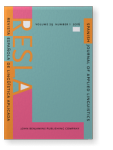Vol. 29:1 (2016) ► pp.115–140
Vol. 29:1 (2016) ► pp.115–140
Interferencia léxica y aprendizaje virtual
La enseñanza de la lengua extranjera de especialidad turística en contextos universitarios
La investigación sobre el lenguaje turístico está adquiriendo cada vez mayor relevancia en los contextos educativos españoles, sobre todo en el ámbito universitario. Paralelamente, el número de palabras inglesas en el discurso castellano del Turismo no ha dejado de crecer, provocando niveles elevados de interferencia léxica. El objetivo de este artículo es ver en qué medida esta presencia del inglés se puede aplicar a la enseñanza del español para fines turísticos. Para ello, se ha utilizado un corpus que contiene conversaciones prototípicas. Los datos muestran múltiples préstamos y calcos léxicos, la mayoría de los cuales ya forman parte de la lengua española en la industria. Por lo tanto, y por medio de un mundo virtual creado con Opensim, se han diseñado actividades destinadas a facilitar la adquisición de este léxico en particular. El fin último de este estudio es concienciar de la presencia del inglés a los estudiantes de español como lengua extranjera, así como dotarles de habilidades que redunden en una mejora de sus niveles de producción lingüística.
Article language: Spanish
